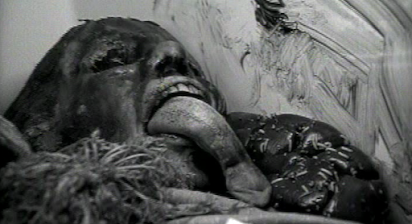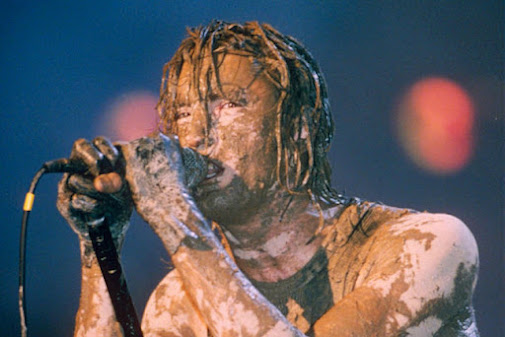#Faun #pagan folk #darkwave #neo-medieval #folk rock #neofolk #European folk #traditional #world music #German #music video
Of all the anonymous-authored quotes floating around the interwebs, this is probably my favorite: "Religion is regarded by the common people as true, by the wise as false, and by the rulers as useful." The quote is often attributed to Roman renaissance man, Seneca the Younger, though nobody seems to know when or where he actually said it, which means someone probably just stuck that quote onto him to give it more legitimacy. I guess the quote being the truest thing ever simply didn’t make it legitimate enough. What’s kind of funny about people attributing this quote to a Roman is that anytime I see the quote, I immediately think of the Roman Empire. When Rome started out, religion was generally an unorganized series of beliefs and rituals that greatly differed from tiny region to tiny region. A region often had a patron/patroness god/goddess such as Athena for Athens. Today this ancient form of religion is known as “Paganism.” However, when the city of Rome became the huge Roman Empire, there were many different peoples with many different beliefs and cults all living under one government. For a while, the government’s official policy was that anyone could believe what they wanted, as long as they paid their taxes. Actually, there was a fairly new religion called Christianity which was banned for a while. But eventually Christianity was legalized, made the official religion of Rome, and Pagans were heavily persecuted. Because Roman culture was based on Greek culture, and the Greeks love irony. And buttsex. So in an act that has forever solidified itself with the above quote, the Roman leaders used religion as a way of uniting the multicultural empire. It made sense. It’s pretty hard to have unity when you have a nation full of Latins, Greeks, Germans, Celts, Arabs, Jews, Turks, Iberians, and so on, all believing vastly different things. The Roman Empire needed to be united under the worship of one imaginary friend, as opposed to a diverse tapestry of imaginary friends. So this is the part most of us are familiar with. Christians in power began persecuting Pagans in an attempt to stomp out the old religions, a practice that continued well after the empire had fallen, and there were new kingdoms in its place. One of the methods of stomping out both the religion and culture of Paganism, besides a genocide here and there, was the Christianization of Pagan holidays. The Celtic holiday of Samhain became the Catholic holiday of All Hallows’ Eve, now known as Halloween. Ostara became Easter. For those of you wondering what painting eggs has to do with the return of Jesus, it symbolized the return of Spring, which is what Ostara was about. One of the Pagan holidays was May Day, which is the day after Walpurgisnact, and finally here we are!
Yes, dear readers, the Musik Video I’m reviewing today is about Walpurgisnacht. And the reason that massive introduction was needed is because the holiday, the Video, and the band that made it, are all proof that cultural Paganism is alive and well, despite two thousand years of attempts at Christianization. But first, one last history lesson. May Day, a secular version of which is still largely celebrated, was all about welcoming Summer. The Germanic Pagans celebrated the night before by lighting a bonfire, and dancing around a Maypole which symbolized a big throbbing Schwanz. Yeah, my elementary school teachers left that part out when my class did the Maypole dance. So how does one Christify a holiday like this? Well, the Catholic Church decided that April 30th - May 1st would be a time to celebrate Saint Walpurga, an English missionary that is credited with bringing Christianity to Deutschland. What followed next was perhaps the most awesome discretion in the history of religion. The night before May Day, known as Walpurgisnacht (Walpurgis Night), eventually became a haunted night where witches allegedly gather in Germany to hold rituals and, I assume, do various witchy things. Basically, Saint Walpurga’s night became Germany’s Satanic Halloween. To add yet another insult, The Church of Satan now celebrates Walpurgisnacht as one of its unholy holidays. Ouch. So now with all that being said, on to the Musik.
“Walpurgisnacht” is performed by German Pagan Folk band Faun, and it’s awesome. Seriously, with all the babbling I just did, it should be obvious that I love this topic, and Faun did a sweet job of honoring such a cool holiday. Faun’s “Walpurgisnacht” paints a really beautiful picture of German Pagans coming out to celebrate. Faun’s ode to Witchcraft is definitely more about the pre-Christian Pagan celebrations as opposed to Satanism. However, the Video actually bridges the past with the present. It starts out with some scenery porn showing the band travelling through the forest to the Maypole. When they get there, there are sexy Frauen wearing while silk, and prancing around the Maypole/Schwanz. After some more prancing, the girls light a bonfire, and as the flames grow higher, they smear dirt on their skin while looks of ecstasy appear on their faces. Yeah, the forest isn’t the only eye candy in this Video. But it’s at this point that things really get good if you’re a humungous nerd like me. The shots now alternate between the band singing around a bonfire in the darkness of night, and people dressed as fauns dancing around said bonfire, and waving incense. The shot then cuts to the sky to reveal three moons, and the Triple Moon Goddess of Wicca. After a close-up of the fauns, the shot then goes to show two moons with Wicca’s Horned God. It’s at this point that my head just fucken explodes all over the walls. Yeah, I pretty much marked out like mad the first time I saw this. I totally love Wiccan mythology. Yes, I know its ancient origins go back to the sixties, but who cares? The imagery and stories of Wicca are awesome. And we so rarely see any representation of its mythology in the media. So yeah, I was super excited to see the Triple Moon Goddess and Horned God here. What’s even better is that the Video then goes on to do things that reference other less known aspects of Wicca. The Horned God throws a type of spiritual rope up to the Triple Moon Goddess and pulls her down from the moon onto earth. This is a reference to a ritual called “Drawing Down the Goddess,” in which Wiccans summon the goddess to come down and possess the body of the High Priestess. I kind of have mixed feelings here. On the one hand, the fact that people believe in literally existing gods is one of the reasons I’m a card-carrying misanthrope. On the other hand, I can’t help but enjoy it from a pure entertainment standpoint. It’s cool mythology, and perhaps the people who worship these gods are a part of the mythology too. After the goddess is brought to earth, she and the god slowly walk towards each other, while a priestess holds a rope. She ties their wrists together, which is a reference to the Wiccan handfasting. And probably the bondage that will occur later that night. The Horny God, amirite?
“Walpurgisnacht” mixes good Musik, interesting stories, and pretty visuals to make a great Video. I also can’t stress enough just how good it is that Faun, who has songs in many different languages, chose the German language for this song. A lot of European bands sing in English in order to reach a wider audience at the expense of quality. English is fine, but die schreckliche deutsche Sprache is an art language. Depending on how one uses German, it can sound brutally violent, soft and sweet, heartbreakingly sad, or seductively sexy. Eisblume manages to do the latter three in “Leben ist Schön.” German is naturally dramatic, which makes it perfect for Musik and movies. “Walpurgisnacht” would have been a good song in the language of Shakespeare, but not nearly as good as it is in the language of Lindemann.
From: http://eisenkreuzleben.blogspot.com/2015/01/walpurgisnacht-faun.html
Faun is a German band formed in Munich in 1998, who have been labeled as Pagan folk (as they often refer to themselves), neofolk, darkwave, Celtic folk, medieval music or, more recently, folk rock. The fact is that the Bavarian sextet presents a range of very original and diverse compositions, ranging from melancholic ballads to more festive songs. Most of these characteristics are the result of the use of ancient musical instruments such as the Celtic harp, the nyckelharpa, the hurdy-gurdy, the cittern, bagpipe and many others. In addition, the songs are sung in several languages, including the band members’ native German, Latin, Hungarian and ancient Scandinavian languages. The name “Faun” refers to the deity of Roman mythology, Faunus, the Pan of the Greeks, which refers to the band members’ reverence for nature and its creatures. From: https://mythologica.com.br/en/features/faun-german-pagan-folk/























